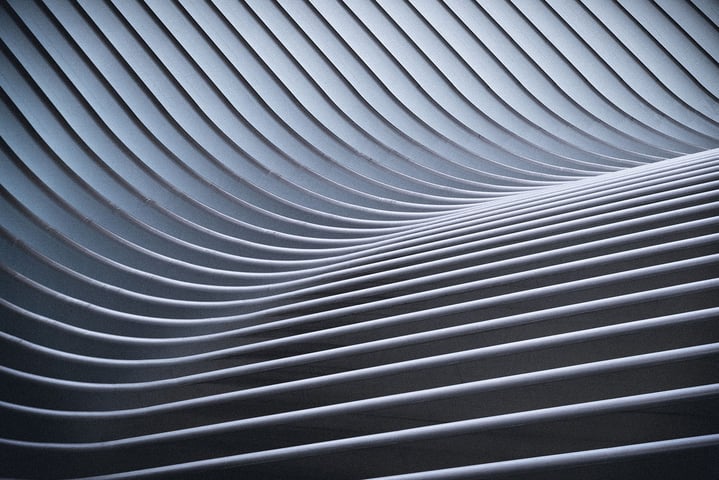
Baseline stability is important in order to get the most out of your QCM-D measurement. Here we will list nine things of what could possibly be going on that make your baseline unstable. Keeping these things in check will help you get the most out of your QCM-D measurements.
More or less, all measured frequency, f, and dissipation, D, data is analyzed relative the values of f and D for a clean sensor in a reference fluid, e.g., a buffer or air. Typically, when starting a new measurement, one does so by first measure these reference f and D values. If no surface reaction is going on, one would expect these reference values to stay constant over time, i.e., you should have a so-called stable baseline. If not, something is going on and it will be hard to say which reference f and D values should be used in the subsequent data analysis.
Under experimental conditions where a reaction is taking place it might not be possible to get a stable baseline. An example of such a situation would be if the sensor coating is reacting with the solvent used, e.g. dissolving or swelling. Those are reactions that the QCM-D sensor is ‘intended’ to detect and will of course be reflected in the measured f and D values. So, what at first sight looks like a baseline drift that should be eliminated could be an unavoidable consequence of the experimental setup.
Typically, as a reference, a clean 5 MHz sensor, with a non-reactive coating, operated at 25°C and measured at 3rd harmonic could be expected to show frequency and dissipation drifts of < 0.5 Hz/h and <2·10-8/h respectively in air, and <1.5 Hz/h and <2·10-7/h respectively in water.
The measured f and D values will never be more stable than what is made possible by the internal reference clock and other components in the QCM-D instrument. However, this is very, very rarely an issue in a well-built instrument for which one can expect a drift of less than 1 Hz/year for the reference clock.
All baseline ‘drift’ is due to physical processes that affect f and D. The recipe to optimized baseline stability is therefore to eliminate all factors that induce unwanted and uncontrolled changes of the measured parameters to make sure that only those processes that one wants to measure are reflected in the f and D signals. A robust instrument setup with good temperature control is a good start and will get you a long way, but there are also experimental factors that may affect the baseline. Knowing what to look out for, these factors can often be controlled, and the unwanted drift can be avoided. Here is a list of the usual suspects:
All these factors could induce measurable changes of the f and D responses, and thereby distort the measurement of the physical process intended to be studied. It is therefore good to make sure that you have a stable baseline before you start the measurement so that you have a good reference point to the f and D shifts that you then intend to study.
Download the guide below to read more about how each of these factors affects the baseline and how to address them if you experience a drifting baseline.
Read the guidelines on how to decide which QCM instrument will be the most suitable for your needs
Read about what single-harmonic and multi-harmonic QCM-D means and what the difference is between these instruments.
Learn about the difference between the theoretical QCM sensitivity and the sensitivity which is relevant in a measurement situation.
Read about the piezoelectric effect and how piezoelectricity arises
QSense Omni is designed to offer cutting-edge QCM-D performance in modular setup-configurations based on user needs
To quantify the QCM mass you can use either the Sauerbrey equation or viscoelastic modelling. Learn what happens if you use the wrong approach.
Dr. Michael Rodal is a former employee at Biolin Scientific and a guest writer on the blog. Michael did his Ph.D. in engineering physics and is one of the inventors of the QCM-D technology as well as co-founder of Q-Sense AB. Having developed, and worked with, the technology since the ’90s, Michael is one of the world's leading QCM-D experts.
